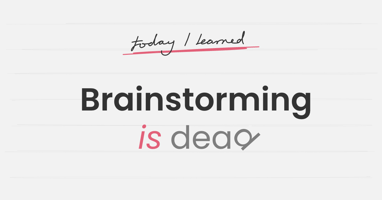A recent article in The Economist, “ Buying Up the Shelves”, discussed trends in slotting fees, mostly from a European perspective. While I am skeptical that regulator pressure against slotting fees will be replicated in the U.S., I think it is worth considering how this fee for new distribution has impacted CPG innovators and consumers in terms of prices and innovation.
As background, retailers began passing on to manufacturers the expense of adding new items to their warehouses, planograms, and inventory systems decades ago. As recently as the late '80s, major vendors such as P&G had enough clout to avoid paying fees, arguing that their heavy spend on marketing and promotion drove demand for new items that retailers could not afford to ignore. However, when media and audiences splintered with the rise of cable and the internet, traditional mass advertising became less effective. Retailers found they could get whatever they demanded to secure shelf space. By collecting tens or hundreds of thousands of dollars per SKU, slotting fees became a major profit center for retailers.
The rise of slotting fees has had a number of effects, and some are not at all obvious:
- The interests of retailers and manufacturers are less aligned than ever. The traditional relationship of vendor and customer was often contentious as they argued over how to split the margin of a given product, but they both had an interest in selling more product. Now, not so much. Slotting fees often generate more income for retailers than sales of a new product, and so it is often in the retailer's interest to focus on maximizing fees. That means it can be highly profitable for the retailer when products fail, as they can then generate new fees. That, of course, is the opposite of the manufacturer's interest.
- Manufacturers are more challenged to manage NPD financial risk. Traditional trade spending (off-invoice allowances, performance allowances) was tied to volume. However, slotting fees are paid upfront without any guarantee of sales volume, and thus are a heavier burden on project financials.
- Fewer innovations. Marketers must now live within a slotting budget in many companies. Personally, I have killed several promising new SKUs because my slotting budget was spent.
- Shorter time-frames for brand building. Slotting means that new products must succeed quickly or die, because retailers are looking for the next round of fees. Whereas once brand builders could argue for an extra few quarters on shelf as long as trends were positive, now if a new product does not hit the retailer's target velocity within a very short time window, it is delisted.
- Greater discounting. Unexpectedly, the existence of a pool of profits from slotting has enabled some retailers to discount more aggressively, similar to how Costco uses membership fees to offset slim product margins.
- More premium products. A retailer's slotting fees for a particular category in a particular region are constant, so it is easier for marketers to justify new products with premium prices and fatter margins. I suspect the impact of premium prices has more than offset the aforementioned discounting.
- Less competition. Big guys have deeper pockets. They hate slotting, but it's a game they are better equipped to win. Smaller innovators are definitely disadvantaged.
If slotting were to disappear tomorrow, I believe it would drive change on four dimensions:
- Higher retail prices to offset loss of a significant profit center;
- Greater product innovation, especially around higher risk/reward propositions;
- More competition due to lower barriers to entry; and
- Longer time horizons for brand building behind new products.





